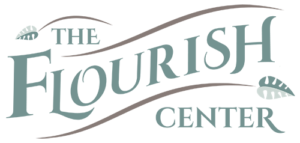This past weekend, my husband and I watched the movie Free Solo, which highlights the rock climber, Alex Honnold, and his famous rope-free 3000-foot ascent in Yosemite. I could go into great detail about how disturbing this movie was for me at points as the mother of an avid rock climber and someone who is fairly terrified of heights…and those are stories for another day.
What fascinated me the most about this story was the part about the research done on Alex’s brain. They performed a MRI on Alex while they relayed images to him, many of which elicit fear in most human brains.
When fear occurs in most of us, the amygdala in our brain fires. This brain area becomes activated causing us to feel fear. This fear makes us at least pause and reconsider what we are about to do, in order to hopefully keep us alive. The amygdala in Alex’s brain did not fire with the normal fear-inducing stimuli, which causes us to deduce that this lack of fear is why he could perform this, shall we bluntly say insane, feat.
This all got me thinking about fear in general. Fear can be a really good thing when it means stopping us from something that might cost us our lives. On the other hand, fear can be a not-so-good thing when it keeps us from taking risks and just “going for it” with the things we want for our lives.
I see fear holding people back all the time in my work. I talk to other NPs who want to start their own practice, but the fears keep them from even making the smallest moves. The women entrepreneurs I encounter fear success and how it might make them too busy or how it might be too hard to handle. I’ve seen the fear of alternative therapies or lifestyle changes hold my clients back from getting to feel really good every day. I know you know what I’m talking about.
So, what can we do? We sense fear of change, success, conflict, growth, speaking our truth, etc. the same way we sense fear that we would feel if we were running from a bear. It’s our natural response to want to stop the fear, move away from it, and keep ourselves safe.
The good news is that we’ve discovered a mind-body therapy for this exact type of fear. It’s called Emotional Freedom Technique (EFT), also known as “Tapping”. EFT uses acupressure points around the face and upper body. You use your fingers to tap on these acupressure points while you say certain phrases. These points actually tie into the amygdala in your brain helping to turn off the fear, the “fight or flight” response.
EFT is easy to learn and easy to use. I have found it to be one of the most powerful tools for helping me move past fear and frustration. It has been part of some of my boldest moves in my life and in my career.
You might feel a little ridiculous when you first start working with Tapping. Stay with it. At the end of this article, I’ll post a few of my favorite Tapping resources for you.
Have you tried EFT before? Care to share your experiences? Or, do you have questions I can answer for you about this amazing and free tool? Please post your comments and questions below.
Basic EFT Information and How-To: www.thetappingsolution.com
EFT Expert to Tap With: Brad Yates on YouTube


Recent Comments